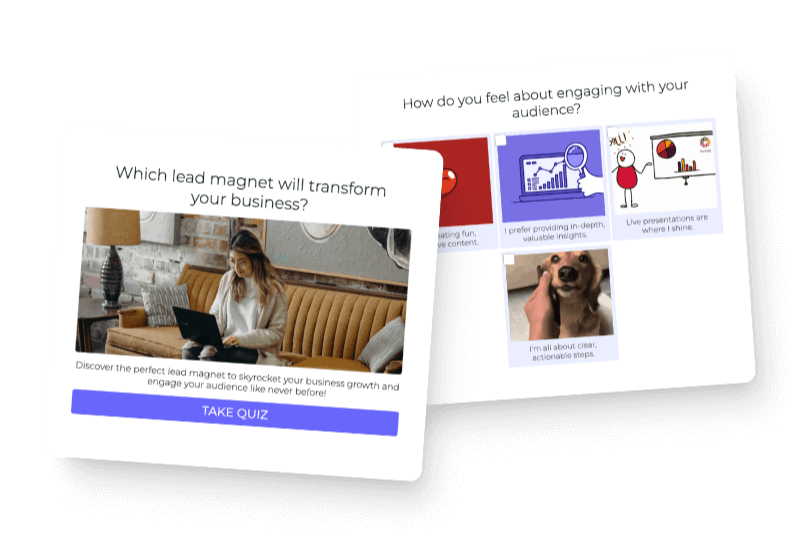This week I had a conversation with Julie Bjelland about connections and authenticity. Those topics have been coming up more and more recently. An intelligent hypothesis would be that its a backlash to the Ai overtaking of everything. People desire more than ever to connect authentically with creators and brands.
But how? How do you show up in a way that’s both authoritative and authentic? How can you show up as a competent person but also show some vulnerability in order to let people in so they can feel connected to you?
I posed this question to Julie, and her response was brilliant. It’s a four-part method.
1. Read your customers mind.
Before we begin with any of this, you must be able to read the mind of your customers and know what they are thinking about. If you don’t do that, then the rest of this is useless. And most messaging never makes it past this point. Businesses talk about their solutions, or topics they think the customer should care about. The customer could care less about your solutions or what you want them to think about. They are thinking about what they are thinking about. So you must talk about what they are thinking about if you want to get through and connect.
Putting this into practice, Julie created her autism quiz that asks people “Could you be autistic?” because in countless conversations this is something Julie knows her audience is thinking about. Because she knows they’re already thinking about it, she also knows the topic will resonate with people.

2. Share your struggles, act with compassion.
Once you’ve established topics that your customers are thinking about. Start off by sharing something you’ve struggled with in one of those areas. As a creator this can be in your personal life, as a brand this can be in a business struggle that you know your audience would also struggle with.
For example: If you are a creator helping people with personal finance, you can share how you found it difficult to start saving money. As long as that’s a topic you know your customers are worried about.
If you are a business you could talk about how you struggled to do your own accounting before creating a software product that helps with accounting. Relatability starts with owning up to your struggled.
Julie shared that you have to let people in if you want to connect and be authentic, sharing your struggles is the fastest and most real way to let people in.
But the best way of sharing your struggle is when you don’t have to actually talk about yourself. What I mean is that you can communicate in a way where it’s obvious you’ve gone through the struggle and come out the other side, without you even having to say it. Julie’s quiz description exemplifies this. You can tell from the word choices and tone that she’s been through what she’s talking about, without needing to say it explicitly.
That’s the ideal scenario, because the focus can stay completely on the customer, but you can still share your perspective at the same time.

3. Share how you worked through your struggles.
I asked Julie how to make sure you don’t come across as incompetent if you are sharing your struggles. Her answer – share how you worked through your struggle. Often times this solution will be something you’ve turned into a product. And that’s where you weave in your content, product, solution, whatever.
But the fact that you’re sharing this solution through the lens of your own experience makes you vulnerable in a good way. And now when you share your expertise it’s more authentic and connecting because people can resonate with.
Again, the best way to communicate this is non-verbally, but through how you say something, and the actual things you say. You want to show people that you have the confidence and ability to talk about something without getting drawn into it, which can only happen if you have fully processed it yourself. You’ll have the ability to talk about the subject with authority and empathy, without the need to overly communicate or be too detailed in a way that gives away your lack of understanding on the subject.
You can see that in the way Julie asks questions on the Autism quiz, it’s obvious that she knows a lot about the subject and also that she is able to talk about it in a way that shows she’s processed it and come to her own conclusions about pathways forward as an expert on the matter.
It’s in the details. You see the answer choices on this question and you can tell that whoever wrote them has been through this many times with clients and has experienced what you are experiencing. It’s also stated in a way that is authoritative, but from a “been there, done that” perspective rather than from a “I am smarter than you” perspective.

4. Reset the goal away from perfection.
If you frame things where the goal is perfection, that is disconnecting. Part of authenticity is admitting that none of us are perfect and we’re just trying to improve. If you do this, and also show up as someone who has made progress, then people will feel connected.
You can see this reframing reflected in the results of Julie’s quiz. It’s written with empathy and compassion. She is still wanting to help people improve, but not from the lens of “you must be perfect” rather, from the lens of “let’s help you improve” which is what really helps people connect.

To bring this all together. Connection with customers comes through resonance. Resonance is a combination of deep audience knowledge, vulnerability, and personally experienced expertise. All of this must be artfully crafted so it’s obvious to the customer that you understand them, but also you can keep the focus on them while doing it.
